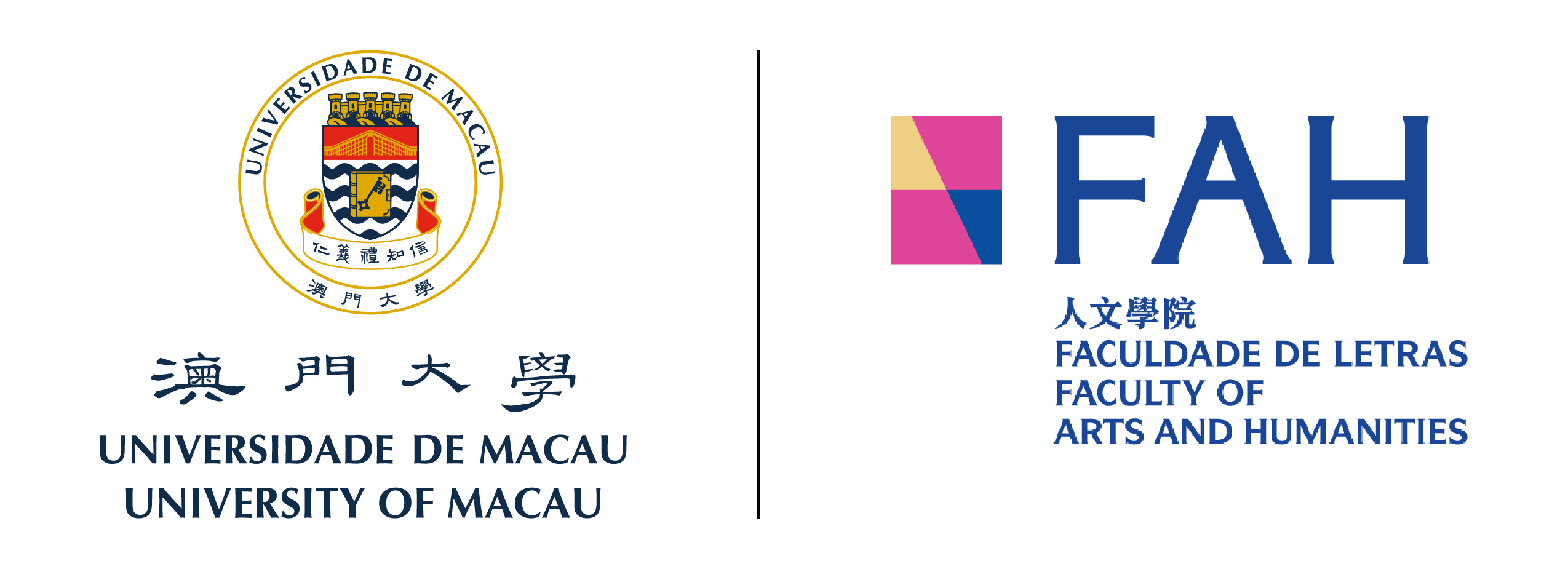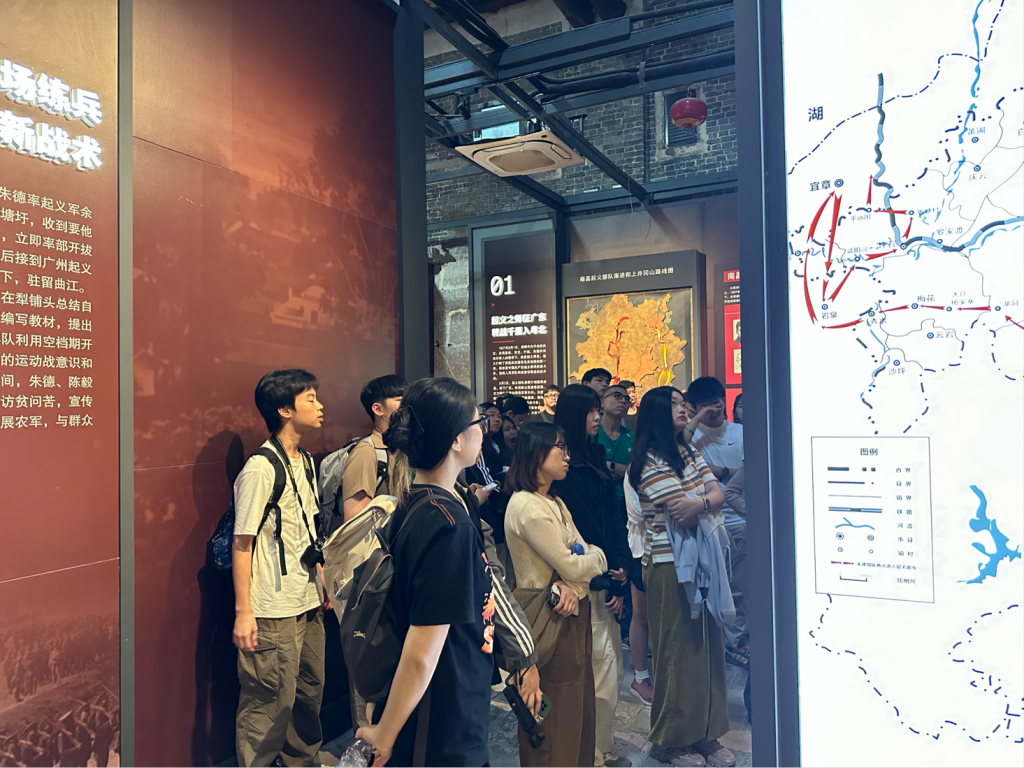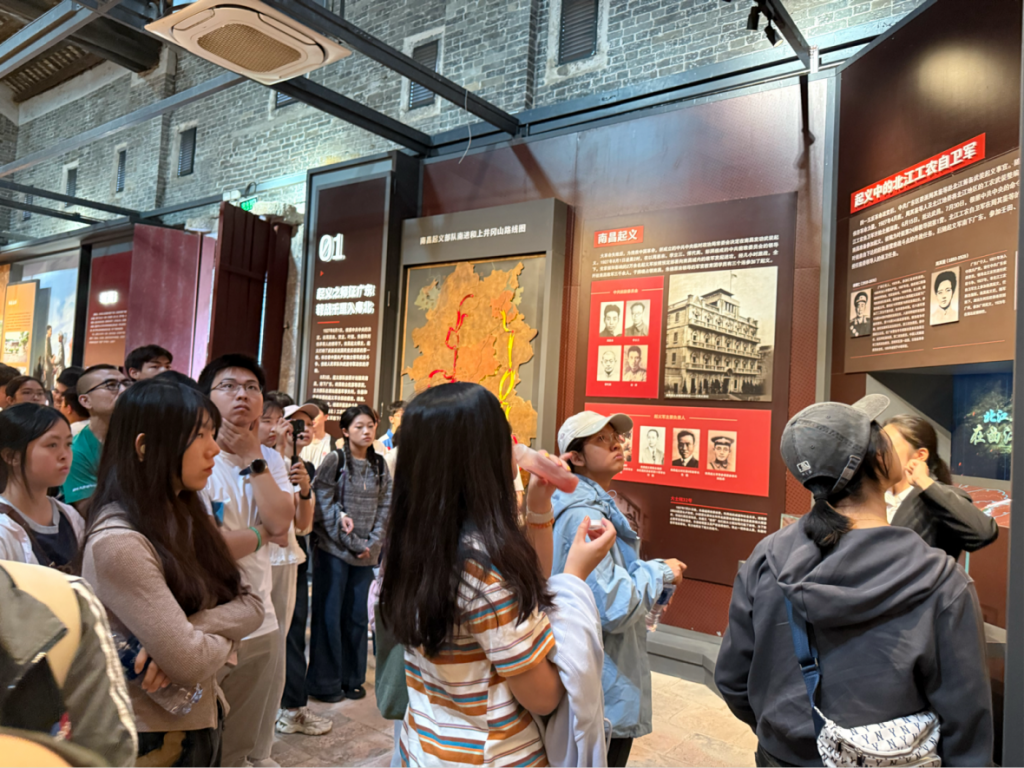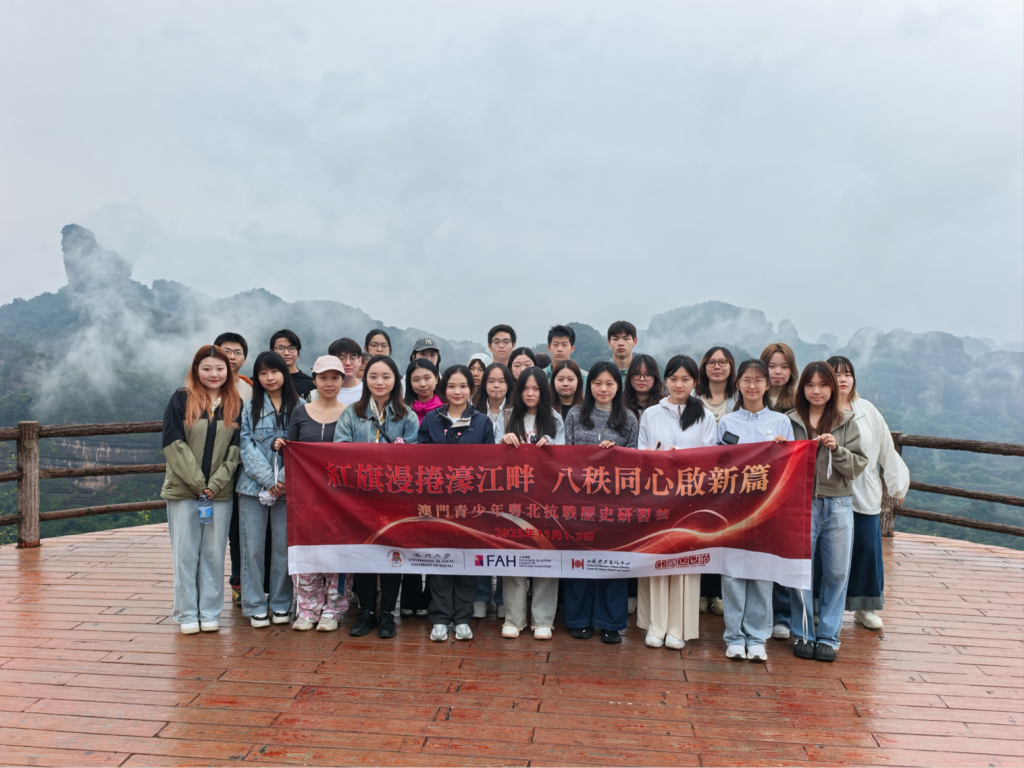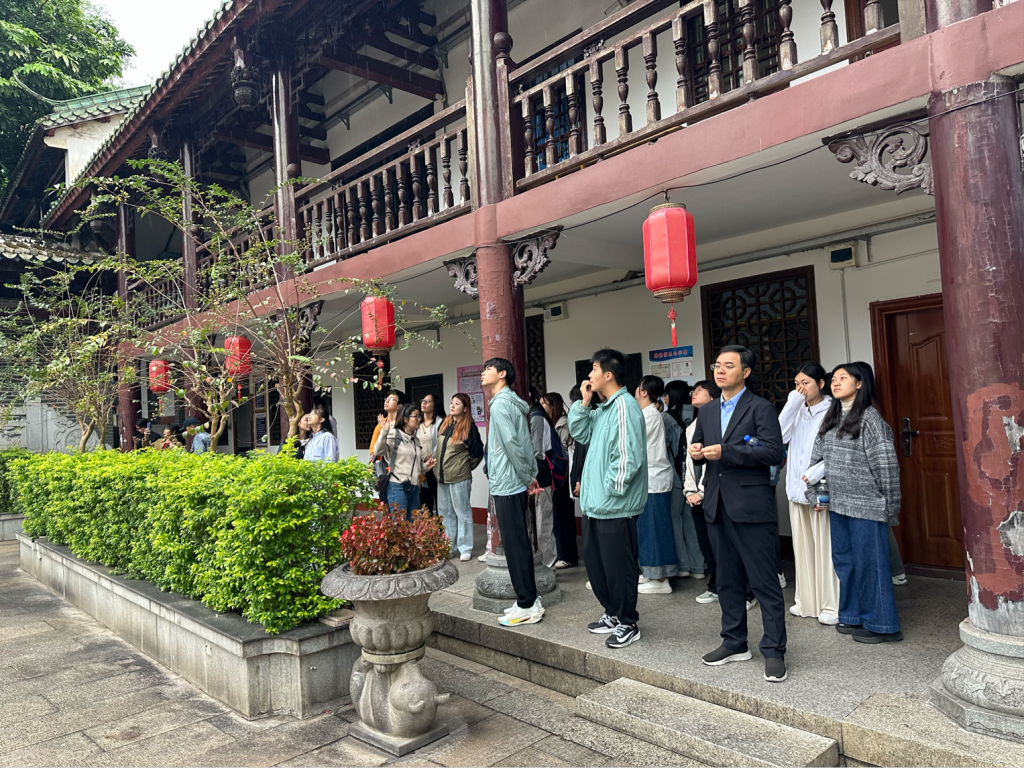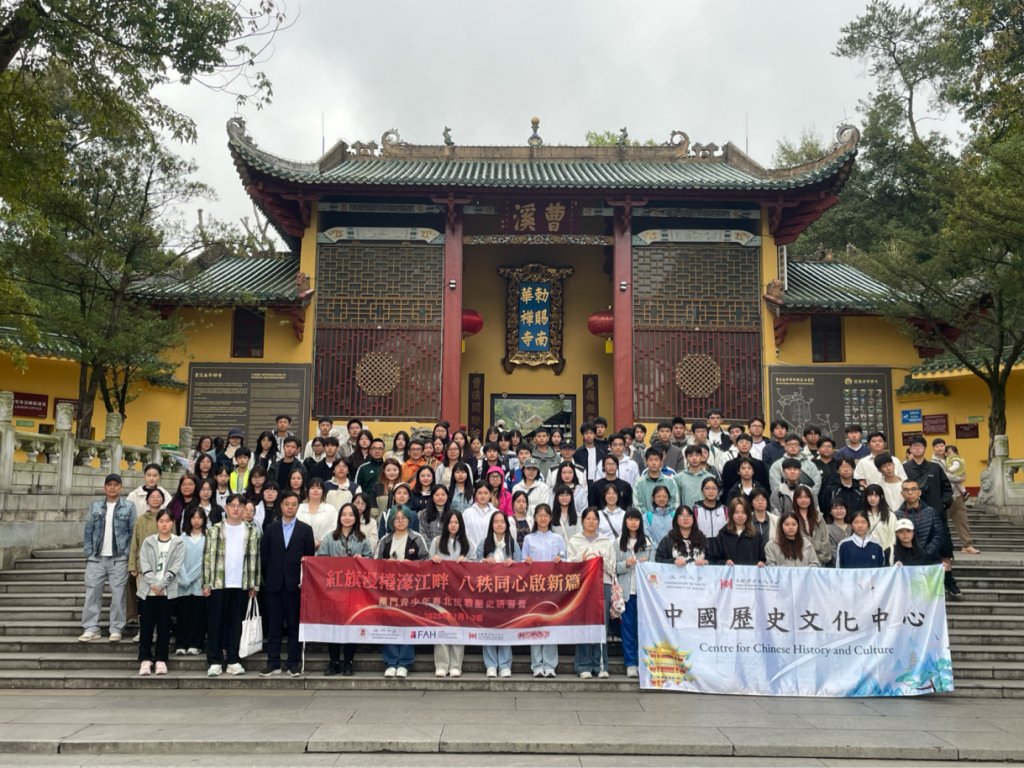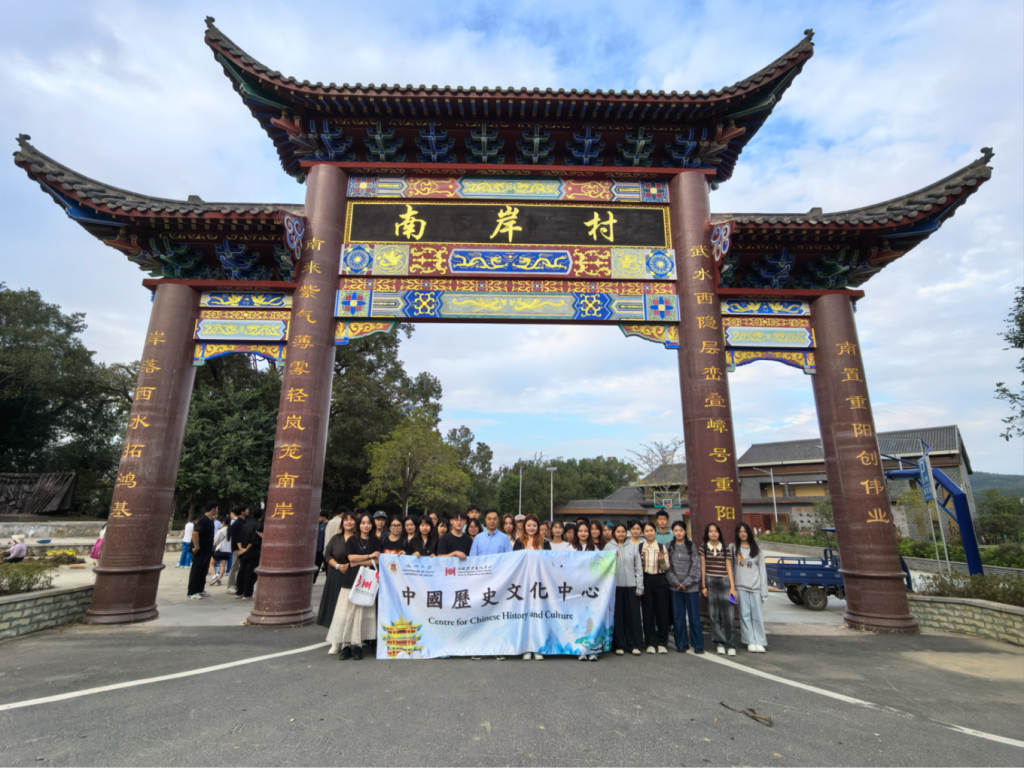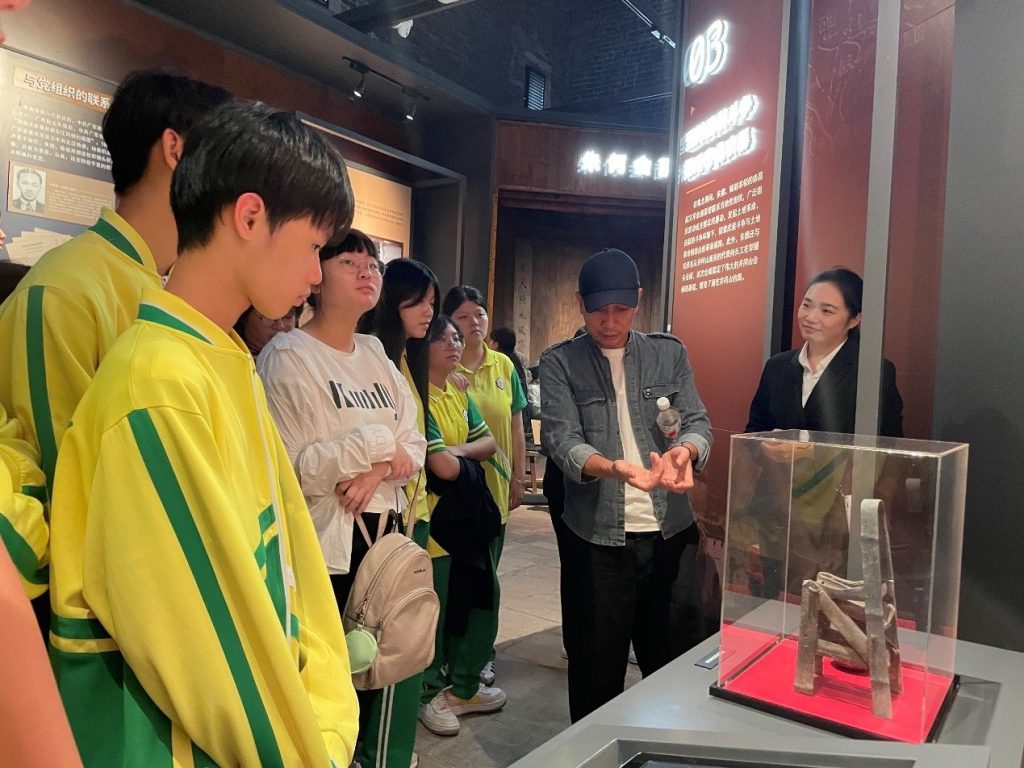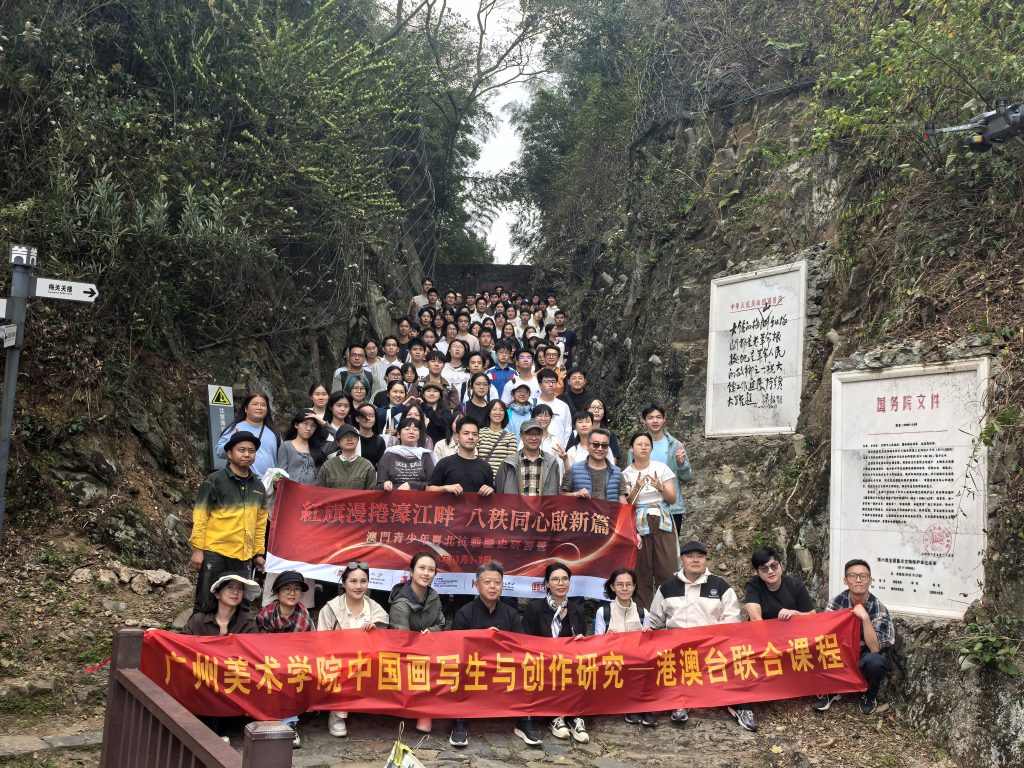
From November 1 to 3, 2025, with the support of the Education and Youth Affairs Department of the Liaison Office of the Central People’s Government in the Macao SAR, the Macao Youths Study Camp, organized by the University of Macau Chinese History and Culture Centre, was held in Shaoguan, Guangdong. This activity aimed to deepen the Macao youths’ understanding of national history and culture through field visits to red revolutionary sites and natural and cultural heritage. A total of 114 teachers and students from the Chinese Cultural Promotional Ambassadors of the University of Macau, Macau University of Science and Technology, City University of Macau, Colégio Diocesano de São José 5, Yuet Wah College, Pui Ching Middle School, Escola Xinhua, Lou Hau High School, Escola Tong Nam, and Macau Baptist College participated in this three-day immersive learning journey.
As an important academic research institution in the Macao Special Administrative Region, the University of Macau Chinese History and Culture Centre places high importance on the promotion and education of patriotism in Macao. Through systematic research and promotion efforts, it enables the Macao youths to gain an in-depth understanding of the glorious history and revolutionary spirit of China. This Shaoguan study tour aimed to enhance Macao youth’s knowledge of national history through firsthand experience, strengthening their sense of national identity and historical mission.
On the first day, the study group visited the Liziyuan Blockhouse—the “Chongyang Anti-Japanese Self-Defense Battle Site” located in Chongyang Town, Wujiang District. This municipal-level cultural relics protection unit bears witness to the heroic resistance of local soldiers and civilians against the enemy in 1945.
Subsequently, the teachers and students visited the Lishi Pawnshop historical building complex. This late Qing Dynasty structure not only showcases the traditional commercial architectural features of northern Guangdong but also holds significant revolutionary importance as it was where Zhu De summarized the “28-Word New Guerrilla Tactics” in 1927. Through professional explanations, students gained a deeper understanding of the revolutionary memories preserved in this Guangdong Provincial cultural relics protection unit.
On the morning of the second day, the team visited Fengdu School for a study session. Founded with the support of the Northern Expedition general Zhang Fakui, the school served as the activity centre of the CPC Shixing County Committee during the War of Resistance Against Japan and has now become an important patriotic education base. The University of Macau Chinese History and Culture Centre arranged a special thematic explanation to help students understand the historical context of the South China Anti-Japanese Base Area.
In the afternoon, the students walked the Meiguan Ancient Road. This ancient post road, excavated by the famous Tang Dynasty chancellor Zhang Jiuling in 716 AD, was not only a vital transportation route in ancient China but is also a national-level key cultural relics protection unit. Teachers and students hiked the ancient path, experiencing the weight of history.
Later, the team visited the Danxia Mountain UNESCO Global Geopark, exploring the Yangyuan Stone scenic area and experiencing the Water Danxia boat tour, personally witnessing the natural wonder described as “red as cinnabar, bright as glowing clouds.”
On the third day, the team continued to explore Danxia Mountain, visiting the Zhanglao Peak scenic area and the Xianglong Lake scenic area to comprehensively understand the unique landforms of this UNESCO Global Geopark. Teachers from the University of Macau Chinese History and Culture Centre conducted on-site geological science education, organically integrating natural science with humanities education.
In the afternoon, the teachers and students visited Nanhua Temple. This renowned Buddhist temple, known as the “Sixth Patriarch’s Ancestral Temple,” is the birthplace where the Sixth Patriarch Huineng propagated the “Southern Chan School Dharma.” Through the visit and learning, the students gained a deeper understanding of Lingnan Chan Buddhist culture.
This study tour innovated the form of patriotic education by combining visits to red revolutionary heritage sites with experiences of natural and cultural heritage. During the tour, the students actively engaged with tour guides, accompanying teachers, and local residents, delving into the local folk customs, history, and culture. The three-day immersive learning not only deepened their understanding of revolutionary history but also strengthened their sense of identification with Chinese culture.
The Centre for Chinese History and Culture of UM stated that it will continue to play its role as a bridge and actively organize such study tours to provide more platforms for Macao youth to learn about the history and culture of their motherland. In the future, the Centre plans to expand the scope of study tours to include more red education bases, while also organizing a series of outcome exhibitions and thematic lectures to further enhance the effectiveness of patriotic education.

